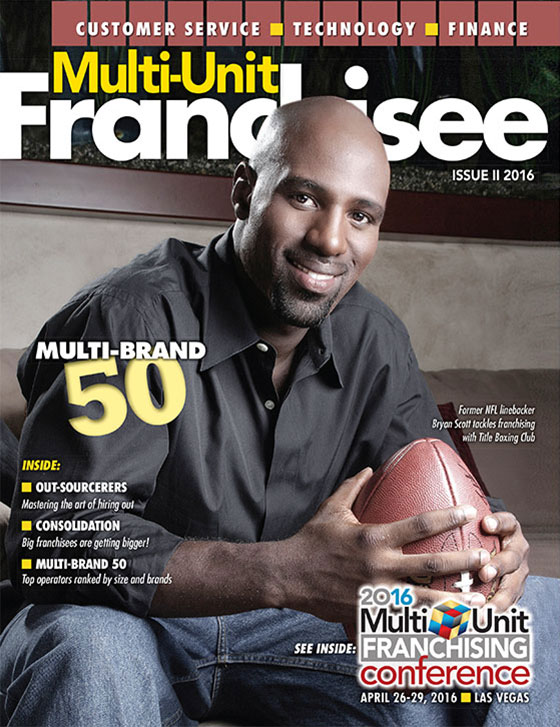Growing Gross Margin: Small Steps Taken over Time Boost Profits

Do you know the seven drivers of gross margin? More important, do you know how to actually manage them in your business? Let’s look at each one in turn—and they are remarkably similar in virtually any kind of operation.
- Not taking cash discounts on payables.
“2%/Net 10.” It doesn’t seem like a lot, does it? However, if you have the cash available, not taking discounts will affect your gross margin. Two full percentage points off your cost of goods sold items can have a significant “add up” effect if you are consistent with this on a long-term basis. If you don’t have the cash available, you need to address other issues in your operational processes to generate the cash to enable you to take those discounts, and to participate in other opportunities as they come along. Cash is still king, and as the economy continues to be of concern cash accumulation is highly advised. - Low productivity.
Every operation can improve how they do what they do. No exceptions. It doesn’t matter if you are operating at the highest labor efficiency in your network, there is always room for improvement. One way to achieve this is to get everyone within your labor line item on board with driving up your production or service efficiencies. People enjoy competition, and creating new ways for staff to engage in friendly competition usually results in labor savings that drop straight to gross margin. - Poor inventory control.
The only thing that sucks up cash faster than poorly managed receivables is poorly managed inventory. Excess inventory directly affects gross margin. This also can be true in a service-based business where your “inventory” is the number of hours you are buying every day. How you deploy those hours is critically important if you want to maximize your gross margin. Your most expensive people should be working on your highest revenue-producing projects, and your least expensive people should be delivering results on your lower revenue-producing activities. As it turns out, exactly the opposite is often true—and no one is paying attention. - Shrinkage.
I often tell the story about the hotel I stayed in that actually posted on the bathroom mirror the price you would be charged if you wanted to “buy” various items from the room. Actually, there were a number of great deals: the sheets were cheaper than at Costco! So who steals in a business? At any given time almost anyone can be tempted. Managing that temptation by careful inventory and stock controls is critically important in maintaining a culture of accountability and honesty. - Bookkeeping errors.
Where do you first learn that something is wrong in your business? Is it in your head? Usually not. You usually feel it first in your gut. When you get that feeling, don’t ignore it because you are probably right. Bookkeeping errors can come in the form of theft or incompetency that can lead to jail, divorce, or even an early grave. We have an excellent checklist I’m happy to make available if you feel there is something wrong in the accounting activities in your business. Just shoot me a quick email and I’m happy to send it along. - Poor pricing.
We teach a wonderful tool called “break-even” that enables a business owner to “measure the paranoia” of a price increase. When you realize how much less you can sell and still make the same amount of money if you raise your price, this knowledge is truly empowering—and has enabled many business networks to improve gross margin as a result of careful, consistent price increases. - Poor buying.
It is easy to get lazy and not react quickly when our costs increase, and they always do. When I owned my printing company I often consulted with other owners around the country who hadn’t bothered to look at their paper invoices, only to discover later that over a 12-month period they had a 4 percent increase in their costs. Not paying attention costs gross margin. All business owners are busy, but another mistake is to not take the time to check that your trusted vendors aren’t gouging you as you extend your long-term relationships with them. An excellent exercise is to strive for a 2 percent decrease in all of your cost of goods sold items annually. It takes work and commitment, but once again that 2 percent drops directly to your gross margin.
Finally, one of the most important elements of Profit Mastery is the concept that gross margin is not usually affected by a large (5 to 10 percent) change in your costs or a dramatic increase in sales. Improving those numbers is a result of management, taking care of business every day, and making a small (1.5–2%) improvement in many line items—which ultimately drives up gross margin.
Rod Bristol is executive vice president at Profit Mastery. Learn more at www.profitmastery.net, 800-488-3520 x13 or email [email protected].
Share this Feature
Recommended Reading:
FRANCHISE TOPICS
- Multi-Unit Franchising
- Get Started in Franchising
- Franchise Growth
- Franchise Operations
- Open New Units
- Franchise Leadership
- Franchise Marketing
- Technology
- Franchise Law
- Franchise Awards
- Franchise Rankings
- Franchise Trends
- Franchise Development
- Featured Franchise Stories
FEATURED IN

Multi-Unit Franchisee Magazine: Issue 2, 2016

$250,000
$250,000





 The multi-unit franchise opportunities listed above are not related to or endorsed by Multi-Unit Franchisee or Franchise Update Media Group. We are not engaged in, supporting, or endorsing any specific franchise, business opportunity, company or individual. No statement in this site is to be construed as a recommendation. We encourage prospective franchise buyers to perform extensive due diligence when considering a franchise opportunity.
The multi-unit franchise opportunities listed above are not related to or endorsed by Multi-Unit Franchisee or Franchise Update Media Group. We are not engaged in, supporting, or endorsing any specific franchise, business opportunity, company or individual. No statement in this site is to be construed as a recommendation. We encourage prospective franchise buyers to perform extensive due diligence when considering a franchise opportunity.